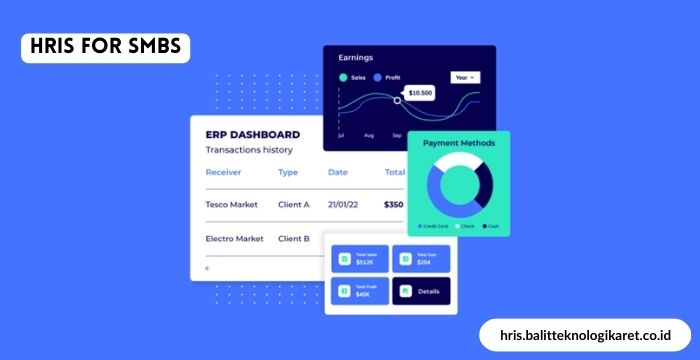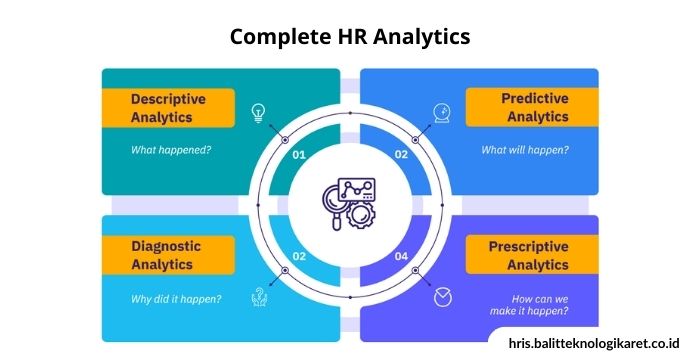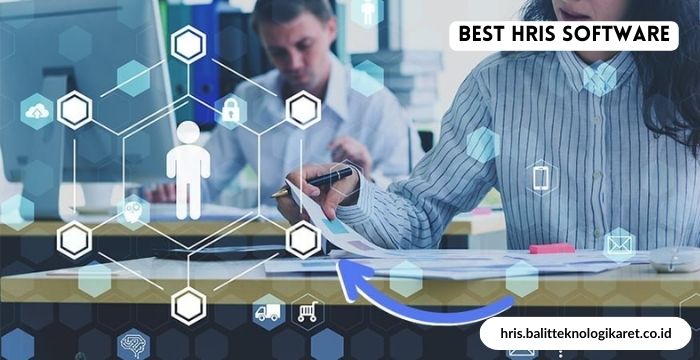I. Introduction
hris.balitteknologikaret.co.id | HRIS for SMBs – In today’s dynamic business landscape, managing human resources efficiently is critical for the success of any organization, regardless of its size. Human Resources Information System (HRIS) is a term that might sound complex, but its significance for small and medium-sized businesses (SMBs) cannot be overstated.

A. Defining HRIS (Human Resources Information System)
At its core, HRIS, or Human Resources Information System, is a software solution designed to streamline HR processes and centralize employee data and information. It’s essentially the digital backbone of your HR department, enabling businesses to manage everything from employee records and payroll to recruitment and performance evaluations in one unified platform.
B. The Importance of HRIS for Small and Medium-sized Businesses
For SMBs, the role of HRIS is particularly crucial. These businesses often operate with limited resources, making efficiency and cost-effectiveness paramount. HRIS offers SMBs the opportunity to level the playing field with larger competitors by providing sophisticated tools to manage their workforce without breaking the bank.
II. Benefits of HRIS for SMBs
A. Streamlined HR Processes
One of the primary advantages of HRIS is the automation of HR processes. Tasks that were once time-consuming, such as payroll processing or tracking employee leave, can now be handled swiftly and accurately, freeing up HR staff to focus on more strategic activities.
B. Cost-Efficiency
SMBs are always mindful of costs, and HRIS offers a cost-efficient solution. By reducing manual administrative work, it minimizes the risk of errors and the need for additional staff. In the long run, this leads to substantial cost savings.
C. Enhanced Data Accuracy and Security
Data accuracy is paramount in HR. HRIS ensures that employee data is consistently accurate and secure. Additionally, it allows for controlled access to sensitive information, mitigating the risk of data breaches.
D. Improved Employee Management
HRIS systems provide SMBs with tools for effective employee management. From tracking performance to monitoring attendance, SMBs can better understand and engage with their workforce, ultimately fostering a more productive and satisfied team.
III. Key Features of HRIS for SMBs
A. Employee Data Management
HRIS simplifies the management of employee information. It centralizes data, making it easy to access and update details such as contact information, job titles, and performance evaluations.
B. Payroll and Benefits Administration
HRIS automates payroll processes, ensuring that employees are paid accurately and on time. It can also manage benefits administration, helping SMBs stay compliant with various regulations.
C. Time and Attendance Tracking
Efficient time and attendance tracking is essential for SMBs to manage employee productivity and adhere to labor laws. HRIS systems provide precise tracking and reporting capabilities.
D. Reporting and Analytics
HRIS generates insightful reports and analytics, allowing SMBs to make data-driven decisions. These reports can aid in various HR processes, from recruitment strategies to performance evaluations.
In the world of SMBs, where every resource matters, HRIS is not just a tool; it’s a strategic asset. It empowers these businesses to compete effectively, reduce costs, and enhance their most valuable resource—their people. In the sections that follow, we’ll explore the specific features that make HRIS so invaluable for SMBs and share real-world success stories, illustrating how this technology can transform HR operations.
IV. Choosing the Right HRIS for Your SMB
Selecting the right HRIS for your small or medium-sized business (SMB) is a pivotal decision that can significantly impact your HR operations and, consequently, your overall business performance. As a business owner or HR manager, you must approach this decision methodically to ensure that the chosen HRIS aligns perfectly with your SMB’s unique needs.
A. Assessing Your SMB’s HR Needs
The first step in choosing the right HRIS is to assess your specific HR needs. Every SMB is unique, and your HR requirements may differ from others in your industry. Consider factors such as the size of your workforce, your industry’s compliance regulations, and your long-term growth objectives. Do you need robust payroll functionality, or is talent management a top priority? Identifying your priorities will guide you toward HRIS systems that cater to your essential needs.
B. Evaluating HRIS Options
Once you’ve outlined your HR requirements, it’s time to evaluate HRIS options. There’s a wide array of HRIS providers in the market, each offering various features and pricing structures. Start by researching reputable HRIS vendors and reading user reviews. Reach out to them with specific questions about how their systems align with your needs. Most providers offer demonstrations or free trials, which are excellent opportunities to test their systems firsthand.
C. Scalability and Integration Considerations
As an SMB, you want an HRIS that not only meets your current needs but can also grow with your business. Scalability is key. Ensure that the HRIS you choose can accommodate your expansion plans without requiring a complete overhaul. Additionally, consider integration capabilities. Your HRIS should seamlessly integrate with other business systems you use, such as accounting software or project management tools. Integration enhances efficiency by eliminating data silos and streamlining processes.
V. Real-World Success Stories
One of the most compelling ways to understand the value of an HRIS for SMBs is by exploring real-world success stories. Many SMBs have experienced remarkable transformations in their HR operations and overall business performance after implementing HRIS solutions.
A. Examples of SMBs Thriving with HRIS Solutions
Take the example of a small manufacturing company that struggled to manage payroll, attendance, and compliance manually. After implementing an HRIS tailored to their needs, they saw a dramatic improvement in accuracy and efficiency. Employees received accurate pay on time, and HR staff had more time to focus on strategic initiatives.
B. Tangible Improvements in HR Efficiency
Another example is an IT startup that needed to scale rapidly. They opted for an HRIS that could grow with them. With the system’s self-service capabilities, employees could manage their information independently, reducing the administrative burden on HR. This not only saved time but also improved employee satisfaction.
In my experience, witnessing these success stories highlights the transformative power of HRIS for SMBs. It’s not just a tool; it’s a catalyst for positive change, allowing SMBs to compete effectively, scale efficiently, and provide an exceptional employee experience. As you embark on your HRIS journey, remember that the right choice can position your SMB for long-term success. The investment in HRIS is an investment in your business’s future.
VI. Future Trends in HRIS for SMBs
The world of HRIS is dynamic, constantly evolving to meet the changing needs of businesses, and SMBs are no exception. As technology advances and workplace trends evolve, HRIS for SMBs is set to undergo significant transformations.
A. Integration with Emerging Technologies
One of the most exciting trends on the horizon is the integration of emerging technologies into HRIS for SMBs. Artificial intelligence (AI) and machine learning are poised to revolutionize HR processes. SMBs can expect AI-powered chatbots for employee inquiries, predictive analytics to identify potential talent, and automated resume screening. These technologies will not only boost efficiency but also enhance decision-making by providing data-driven insights.
B. Cloud-Based HRIS Solutions
Cloud-based HRIS solutions are becoming increasingly popular among SMBs. The flexibility, scalability, and accessibility of cloud systems make them a perfect fit for businesses looking to grow and adapt quickly. Cloud HRIS solutions facilitate remote work, allowing employees and HR teams to access critical data and functions from anywhere, promoting collaboration and flexibility in the modern workplace.
C. Mobile Accessibility and Remote Work Support
Mobile accessibility is no longer a luxury; it’s a necessity. SMBs are recognizing the importance of providing employees with mobile-friendly HRIS access. With the rise of remote and hybrid work models, mobile HRIS applications enable employees to request time off, access pay stubs, and update personal information on the go. This not only enhances the employee experience but also empowers HR teams to manage a dispersed workforce seamlessly.
VII. Conclusion
In conclusion, the value of HRIS for SMBs cannot be overstated. It’s a strategic investment that streamlines HR processes, enhances data accuracy, and empowers data-driven decision-making. As someone who has witnessed firsthand the positive impact of HRIS on SMBs, I can attest to its transformative power.
The right HRIS solution positions SMBs for success, offering the scalability and flexibility needed to adapt to changing business landscapes. As the HR technology landscape continues to evolve, staying informed about emerging trends is vital. By embracing these trends and selecting the right HRIS solution, SMBs can take the next step toward HR excellence, ensuring their workforce remains agile, productive, and prepared for the future. Don’t just invest in HRIS; invest in the continued success and growth of your SMB.

